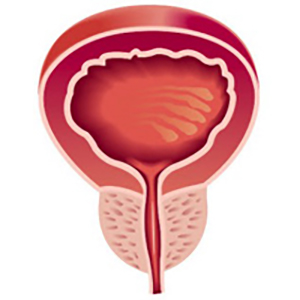The bladder neck preservation in robot assisted radical prostatectomy: Surgical and pathological outcome

All claims expressed in this article are solely those of the authors and do not necessarily represent those of their affiliated organizations, or those of the publisher, the editors and the reviewers. Any product that may be evaluated in this article or claim that may be made by its manufacturer is not guaranteed or endorsed by the publisher.
Authors
Introduction: The post-prostatectomy incontinence is influenced by multiple elements, anatomic components and biological factors. The bladder neck preservation, more accurate during robot assisted radical prostatectomy, works on two anatomic components responsible for post-prostatectomy continence. The bladder neck preservation spares the internal sphincter, which is responsible for passive continence, and results in earlier return to continence and lower rates of post-prostatectomy incontinence. Moreover, this surgical technique spares the zone of urothelium coaptation and provides primary resistance to the urine to maintain postprostatectomy continence. The potential risk of bladder neck positive surgical margins (PSM) may prevent the usage of the bladder neck preservation. Aim: The purpose of this study is to evaluate the surgical and pathological outcome in prostate cancer patients underwent robot assisted radical prostatectomy with bladder neck preservation. Materials and methods: Prospectively, we have collected demographic, clinical, surgical and pathological data of prostate cancer patients underwent robot assisted radical prostatectomy with bladder neck preservation, from January 2014 to December 2016, in Urological Clinic of the University of Padua. Moreover, it was valued the presence of alterations or continuous solutions of specimen external capsule, attributable to the surgical technique of bladder neck preservation, by microscopic and macroscopic pathological analysis. Results: According to D'Amico risk classification, 40 patients (45.4%) had a low risk neoplasia, 35 patients (39.8%) had an intermediate risk neoplasia, 13 patients (14.8%) had an high risk neoplasia. The median prostatic volume, valued on specimen, was 30.84 cc (21.5-44.75 cc). The median prostatic weight, valued on specimen, was 51 gr (36-67 gr). The pathological stage of disease was pT2a in 11 cases (12.5%), pT2b in 37 cases (42.1%), pT3a in 28 cases (31.8%), pT3b in 12 cases (13.6%). The pathological stage of lymph node involvement was pNx in 17 cases (19.3%), pN0 in 66 cases (75%), pN1 in 5 cases (5.7%). The prostate cancers diagnosed had a Gleason score at specimen of 6 in 10 cases (10.4%), 7 (3+4) in 30 cases (34.1%), 7 (4+3) in 20 cases (22.7%), 8 in 19 cases (21.6%) and 9 in 9 cases (10.2%). The prostatic base was involved by neoplasia in 14 patients (15.9%); of these, 5 patients (35.7%) had bladder neck PSM. The patients with bladder neck PSM had: a pathological stage of disease as pT3a in 2 cases (40%) and pT3b in 3 cases (60%); a pathological stage of lymph node involvement as pN0 in 2 cases (40%) and pN1 in 3 cases (60%); a Gleason score at specimen of 8 in 3 cases (60%) and 9 in 2 cases (40%); multiple PSM. Nobody had alterations or continuous solutions of specimen external capsule, attributable to surgical technique of bladder neck preservation. Conclusions: The bladder neck preservation, during robot assisted radical prostatectomy, is a safe oncological procedure resulting in a good functional outcome, about post-prostatectomy continence, working on two anatomic components responsible for post-prostatectomy continence. The bladder neck PSM are linked to neoplasia with adverse pathological features, rather than the bladder neck preservation.
How to Cite

This work is licensed under a Creative Commons Attribution-NonCommercial 4.0 International License.
PAGEPress has chosen to apply the Creative Commons Attribution NonCommercial 4.0 International License (CC BY-NC 4.0) to all manuscripts to be published.

 https://doi.org/10.4081/aiua.2023.12138
https://doi.org/10.4081/aiua.2023.12138



